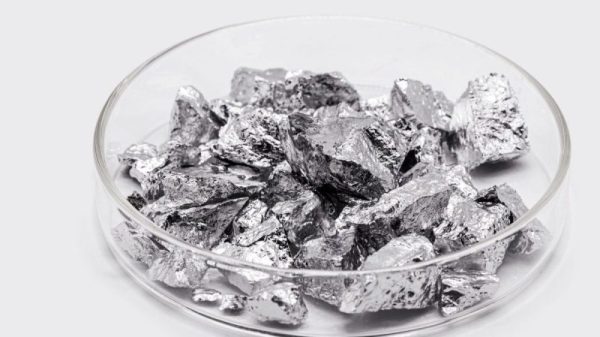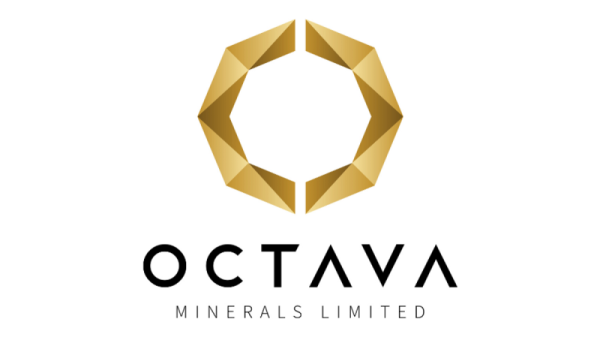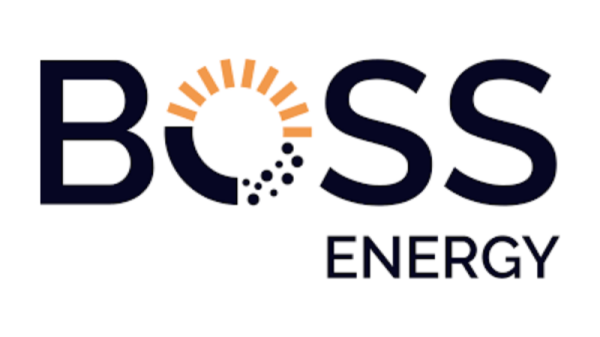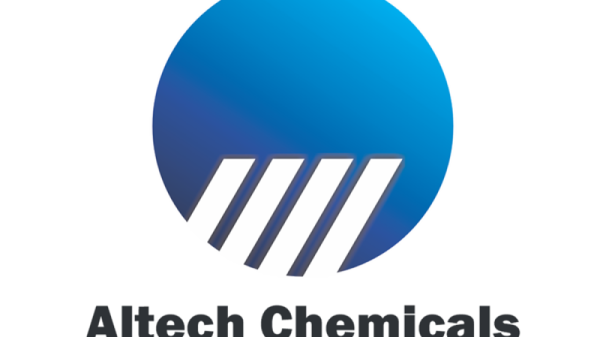Lode Gold Resources Inc. (TSXV: LOD) (OTCQB: SBMIF) (‘Lode Gold ‘ or the ‘Company’) is pleased to announce that it has received and interpreted the data from the previously announced QMAGT survey conducted in summer, 2024. This news release focuses on presenting initial findings, including reporting the identification of a new high-priority target named ‘Steelhead’ extending the emerging Reduced Intrusion Related Gold System (RIRGS) targets already identified on its WIN property. A future news release will expand on these new findings northwards to include Lode’s flagship Golden Culvert property as our geological team evaluates a potential genetic relationship, highlighted by the new QMAGT data between the RIRGS mineralization at WIN and the orogenic styles of mineralization present at Golden Culvert.
Highlights include:
Recent QMAGT system geophysical results integrated with geology and historic geochemical information has identified a new priority prospect, ‘Steelhead’, a previously unrecognized 4km2 area of hornfels on the eastern part of the property. ”Steelhead’s’ prospectivity is enhanced by the presence of anomalous gold and bismuth results in stream sediment samples collected from the catchment draining the new identified 4km2 area of hornfels.The QMAGT system has successfully enhanced the detailed geology of the property and importantly mapped the targeted Tombstone-Tungsten Cretaceous aged monzonite intrusions as magnetic lows and related hornfels known to be prospective for RIRGS as magnetic highs or areas with ‘noisy magnetic gradients’. The Border Gold Zone appears to be controlled by the Border Monzonite and manifests as a ‘roof zone’ above this intrusive and the host Cordierite-Biotite bearing hornfels. The magnetic data clearly defines a 3.5km strike extension to this known mineralized hornfels zone for targeted follow up. Furthermore, the magnetic data defines deep structures both parallel and coincident with the known mineralization and are thought to be important controlling structures for gold emplacement.
Buddy Doyle, VP Exploration commented that, ‘Lode Gold has leveraged the quality QMAGT data to integrate the pre-existing geochemical and geological-structural data on hand to design a targeted ground follow-up program to rapidly generate drill targets on the emerging high-potential RIRGS Targets at WIN, adding materially to its established flagship Orogenic Golden Culvert targets within the large, strategic property package controlled by Lode in the Yukon.’
Regional Setting, The RIRGS Model and How Well the WIN Project Fits
The WIN property occurs in the southern portion of the prolific Tombstone gold belt, see Figure 1. The Tombstone Gold Belt is the type locality for RIRGS, with Figure 2 depicting the accepted model for this type of gold mineralization.
Figure 1: The Tombstone Gold Belt, yellow shaded zone, gold stars show RIRGS deposits and prospects, orange stars tungsten deposits, The black star depicts the location of our WIN project. All are related to mid-cretaceous Intrusive suites and their associated contact hornfels aureoles. Figure modified from the Yukon geological survey broacher 2006-6.
To view an enhanced version of this graphic, please visit:https://images.newsfilecorp.com/files/4064/226527_f5046f6914111af4_004full.jpg
Figure 2: The RIRGS geological model, General plan model of RIRGS (left), note the wide range of mineralization styles and geochemical variations that vary predictably outward from a central pluton. Scale is dependent on the size of the exposed pluton, which is likely to range from 100 m to 5 km in diameter. Hypothetical cross-section (right) of a small (100 m-5 km across) pluton. Of note are the asymmetric hornfels aureole and the early-chilled and more brittle marginal carapace. Preferred sites of intrusion-hosted Au mineralization are above the cupola, where exsolved fluids will accumulate, and mineralized fractures developed in the pluton’s apex and shoulders. Modified from Hart, C.J.R., 2007.
To view an enhanced version of this graphic, please visit:https://images.newsfilecorp.com/files/4064/226527_figure2.jpg
The RIRGS geological model in summary makes the following empirical observations:
Mineralization is associated with a reduced intrusion with the mineralization extending beyond the limits of the intrusion, and locally beyond the thermal aureole (caused by the intrusion), yielding a broad mineralizing system (Fig. 2). The size of the system is generally dictated by the limits of the thermal aureole, commonly several kilometres across, but can be dependent on the depth of erosion with the broadest and best-developed mineralization at the top of or above the pluton. The WIN project contains the known mapped intrusives, the northern part of the Hyland intrusive and the eastern part of the Border Intrusive (see Figure 4) both have extensive hornfels aureoles developed. The known sheeted quartz vein mineralization is hosted in hornfels. A common characteristic is that the RIRGS exhibits multiple styles of mineralization. Particularly in the thermal aureole. Chemically reactive and/or physically brittle sedimentary strata result in a diversity of mineralization styles, whereas the causative pluton is typically dominated by solely sheeted vein sets containing gold. The WIN project Hyland Intrusive has been subject to exploration for Tungsten and Molybdenum in the past with part of the Tuna Tungsten Mineral occurrence within and next to the property’s southern border. The sheeted quartz veins with gold have been found in the roof hornfels.RIRGS often exhibit a predictable zonation of differing deposit styles outward from the central, mineralizing pluton (Fig. 2). Skarns and replacements are generally pluton proximal, with an increase in structural control on more distal mineralization. There is also crustal scale vertical zonation, with epizonal occurrences forming at shallower levels. Predictable metal signatures develop broad-scale zoning surrounding and above a central causative pluton. The stream, soil and rock samples taken by Lode Gold show metal zonation.
Gold, as well as Tungsten (W), may form ore, but Au does not directly correlate with W. Bismuth (Bi) and Tellurium (Te) are enriched in intrusion-hosted Au ores and correlate with Au. Arsenic enrichments characterize hornfels-hosted mineralization and form regional-scale geochemical anomalies. On the WIN project, the sheeted veins have gold correlating strongly with Bi and Te. The WIN and Golden Culvert projects occur in a regional zone of anomalous Arsenic in stream sediments (see Figure 5). Each plutonic suite has a characteristic metallogenic association. Plutons of the Tombstone plutonic suite have alkalic compositions (syenites) and associated gold, bismuth and copper. Plutons of the Mayo suite have metalluminous compositions (hornblende monzonites) and the strongest gold association. Plutons of the Tungsten suite are slightly peraluminous (biotite granite) and are associated with tungsten ± copper, zinc and molybdenum mineralization. Mineralized plutons typically have associated pegmatites, aplites, miarolitic cavities and tourmaline veins, which are all indicative of volatile saturation and development of hydrothermal phases. The WIN project covers part of the Hyland and Border intrusive, both are mapped as Hornblende monzonites, the type of intrusion that has the strongest gold association. Tourmaline veins and breccias have been noted in the Tuna mineral occurrences, within and south of the property.
Traditional exploration methods such as mapping, prospecting, and aeromagnetic, regional stream sediment and soil geochemical surveys are all effective. Since mineralization is typically focused in regions at the top of plutons, target areas should include locations where plutons are not exposed. These may be detected by aeromagnetic surveys that may respond to either pyrrhotite-rich hornfels, or low levels of magnetite in the case of the Tombstone suite alkalic intrusions. Summarized and modified from Hart, C.J.R., 2007.
District Geology
Figure 3: District Geology: Lode Gold’s Golden Culvert and WIN projects depicted on the regional geology provided by the Yukon Geological Survey. Note the WIN Project is dominated by the Proterozoic Vampire formation intruded by Cretaceous monzonites. Mineral occurrences from the Yukon database are also shown. The WIN property contains the Hyland and Border Intrusive bodies, these bodies are depicted in the following figures for visual reference. They are the likely source of the mineralization.
To view an enhanced version of this graphic, please visit:https://images.newsfilecorp.com/files/4064/226527_figure3_enhanced.jpg
Figure 4: Regional Arsenic in stream sediment anomaly encompasses Lode Gold’s Golden Culvert and WIN properties. A characteristic signature of RIRGS. After Hart, C.J.R. and Lewis, L.L., 2006
To view an enhanced version of this graphic, please visit:https://images.newsfilecorp.com/files/4064/226527_figure4.jpg
Figure 1 shows the regional geological setting with a belt of intrusions (the Selwyn Magmatic province) intruding the Proterozoic-aged Selwyn sedimentary basin. Figure 3 illustrates the district geology with both the Golden Culvert property and the WIN property being hosted in the Vampire Formation, the WIN property covers portions of the Hyland and Border monzonite intrusives. Figure 4 demonstrates the projects that occur in a regional arsenic anomaly a common feature of sub-districts with RIRGS within the Tombstone gold belt. Known mineral occurrences are also shown in Figure 4, with the most advanced being the 3 Aces orogenic gold deposit, 15km to the SSW of the WIN project being explored by Seabridge Gold. Aben Minerals have also identified RIRGS style mineralization 18km to the SSW. The nearest historic mineral occurrence to the WIN project is the Tuna prospect, which consists of several zones of veins and breccias with Quartz, Bi, Tungsten, Molybdenum with tourmaline on the south boundary.
Rock Samples Confirmed RIRGS
On December 13, 2023, Lode Gold announced that it had confirmed a RIRGS style mineralization on its WIN property. Rocks samples returned gold values up to 8.53 g/t. with associated bismuth and tellurium at the border gold zone, shown in Figure 5. The mineralization is hosted in sheeted quartz veins, up to 10 veins per metre. The mineralization is hosted in hornfels. Figure 6 shows a photograph of the sheeted quartz veins and a view of the general topography at the border zone sampling area.
Figure 5: Rock sampling sites on the WIN Property. Each dot is a separate sample site, dots are coloured and sized based on gold results, Legends are given in the inset. Colour intervals based on natural breaks. Base image is the 2m Digital Elevation Model (DEM). Blue zone are permanent ice sheets. Monzonite intrusions shown as transparent red stipple. The local geology map shown in figure 7 cover the area surrounded by yellow line.
To view an enhanced version of this graphic, please visit:https://images.newsfilecorp.com/files/4064/226527_f5046f6914111af4_009full.jpg
Figure 6: Photograph of the sheeted vein system left, photograph of the topography in the border area, sheeted veins near photo origin looking SW towards the Hyland Intrusion. Photo on the right from Moynihan, D.P., 2013
To view an enhanced version of this graphic, please visit:https://images.newsfilecorp.com/files/4064/226527_f5046f6914111af4_010full.jpg
Geology of the Border Gold-Bearing Sheeted Vein Area
Figure 7: Map of parts of the Hyland and Boundary plutons and their contact aureoles, showing mineral assemblages and isograds. Structural measurements are compiled on the equal area, lower hemisphere stereonet (inset). Grid lines spaced at 1 km intervals; UTM coordinates are NAD 83. Lode Gold rock sample results shown. Map is shown in Figure 5 and coincides with the inset box on that figure.
To view an enhanced version of this graphic, please visit:https://images.newsfilecorp.com/files/4064/226527_f5046f6914111af4_011full.jpg
The Yukon Geological Survey conducted mapping on the eastern side of the WIN project, see covering the Border Gold Zone, Moynihan, D.P., 2013. Their mapping has been reproduced in Figure 7 with our rock sample gold results overlain. The Hyland and Boundary plutons are hosted by the Latest Proterozoic-Early Cambrian Vampire Formation. The Vampire Formation is dominated by uniform, steel grey to dark grey phyllite that weathers to a rusty brown. The Vampire formation has been altered to hornfels along the contacts with the Hyland and Border monzonite intrusions.
The dominant foliation in the area (Sn) strikes NW/SE, parallel to the orogenic trend, it generally dips NE at 40-70° in the southwest part of the area and dips steeply towards the SW or NE in the northeast part of the area. The sheeted veins located by our field crew appear to be controlled by this Sn structural direction with a similar strike and dip.
Sn is locally overprinted by kink bands that have steeply dipping axial planes. These kink bands post-date development of the contact aureoles and are best developed in low-grade phyllites, which retain a well-defined cleavage. The Hyland pluton-Vampire Fm contact is offset by a number of steeply-dipping, SW-trending normal faults with downthrow to the NW. These faults are sub-parallel to axial planes of the kink bands, and have the same orientation as 1) a number of fine-grained, biotite and amphibole-bearing mafic dikes, and 2) an array of quartz- tourmaline veins that transect the Boundary aureole. Tourmaline is a common accessory mineral to RIRGS sheeted quartz veins and to our knowledge, the NE/SW trending quartz vein array is yet to be sampled.
The Hyland pluton, which was emplaced at 97.1±2.0 Ma (U-Pb monazite age), is elongated in a NW direction and underlies an area of approximately 9×2.5 km. The roof of the pluton is preserved around the topographically highest point near the centre of the intrusion. The southwest boundary of the pluton dips steeply, whereas its northeast and southeast boundaries have gentle to moderately steep outward dips. It is along this moderately dipping NE part of the pluton that our border gold zone is located. The pluton is a multi-phase, biotite quartz monzonite with a megacrystic internal phase and an equigranular outer phase. The contact aureole includes a phyllite outer part and a yellow-weathering, hornfelsic inner part. With increasing proximity to the Hyland pluton, the proportion of chlorite decreases to zero and cordierite, andalusite, and biotite crystals become larger and more abundant. This zonation is approximately 500m wide and parallels the outcropping boundary of the Hyland intrusion. The presence of andalusite suggest a deep emplacement level (circa 9-11 km) for the Hyland intrusion based on geobarometer calculations. Moynihan, D.P., 2013.
An extensive region of Crd+Bt hornfels is also developed in the area to the west of the Boundary pluton. It is notable that here Cordierite (Crd) is dominant and Andalusite is absent. This indicates a shallower emplacement level for the Border pluton which in turn suggests a younger age. The pattern of Crd+Bt hornfels suggests that the Boundary pluton extends underneath this region to the NW paralleling the border. It is here that our Border Zone gold bearing sheeted quartz veins occur. The suggestion is that the Boundary pluton was intruded at a slightly higher level than the Hyland pluton. The absence of andalusite from metapelite in the aureole of the Boundary pluton suggests it was intruded at
It is likely that the Border zone sheeted veins are genetically linked to the Border Pluton in the Cordierite-Biotite-Chlorite-Muscovite-Quartz hornfels that trend paralleling the border, with the higher-grade samples occurring on the edge of the higher temperature Cordierite-Biotite-Muscovite-Quartz hornfels where the Chlorite drops out.
Stream Sediment Sampling
Figure 8: Stream Sediment sampling sites on the WIN Property. Each dot is a separate sample site, dots are coloured and sized based on gold results, left image 8 (a), and by bismuth right image 8 (b). Legends given in insets. Colour intervals based on natural breaks. Base image is the 2m Digital Elevation Model (DEM). Blue zone are permanent ice sheets. Monzonite intrusions shown as transparent red stipple.
To view an enhanced version of this graphic, please visit:https://images.newsfilecorp.com/files/4064/226527_figure8.jpg
A series of closed space stream sediment samples were taken on the WIN project with the results depicted in Figure 8a for gold and for bismuth in Figure 8b. There are two strong gold anomalies (>45ppb) in separate streams, one stream eventually drains the Border gold zone, and the other highlights an area mainly hosted in the Hyland Intrusive and its contact aureole near its NE edge. This drainage also has high Bismuth and has never been investigated by soil or rock sampling. The area has been given the name of the Steelhead Prospect (using the naming theme started by the Tuna mineral occurrence.).
The entire Hyland Intrusive is elevated in Bi, As, Sb, W, Pb, Zn. Only Bi is shown. The stronger Bi stream sediment anomalies (>8.4ppm red, purple) need further follow-up due to their strong correlation with gold in the RIRGS model.
Soil Sampling
Figure 9: Soil Sampling sites on the WIN Property. Each dot is a separate sample site, dots are coloured and sized based on gold results. Legends given in inset. Colour intervals are natural breaks based on entire dataset which includes Golden Culvert, the number of samples in class in brackets. Base image is the 2m Digital Elevation Model (DEM). Blue zones are permanent ice sheets. Monzonite intrusions shown as transparent red stipple.
To view an enhanced version of this graphic, please visit:https://images.newsfilecorp.com/files/4064/226527_figure9.jpg
Soil sampling on the WIN property have in the past been restricted due to the mountainous topography and the glaciated surfaces that are either rock or transported moraine. A small grid over the border zone contains anomalous samples with a zone of >20ppb gold stretching 300m over 3 lines paralleling the border. The project would be amenable for further sampling.
QMAGT Survey
The RIRGS model makes the observation that aeromagnetic surveys are an effective exploration tool. The QMAGT survey conducted over the WIN property is a relatively new system which utilizes a Super-conducting Quantum interference device (SQUID) magnetometer which measures the full tensor response of the earth’s magnetic field. The system is flown beneath the Helicopter in a Dewar filled within a liquid helium super cold bath. The WIN property was flown at a one-hundred-meter line spacing with lines trending NE-SW perpendicular to the geological trend. DIAS, the company that operates the QMAGT system, have provided the following products derived from this survey:
Bxx delineates E-W boundaries preferentially (symmetric for vertical magnetisation, antisymmetric for horizontal magnetisation)
Byy delineates N-S boundaries preferentially (symmetric for vertical magnetisation, antisymmetric for horizontal magnetisation)
Bxy delineates body corners preferentially (anomaly signs depend on magnetisation direction)
Bzz delineates steep boundaries preferentially (symmetric for vertical magnetisation, antisymmetric for horizontal magnetisation)
Bxz delineates E-W boundaries preferentially (antisymmetric for vertical magnetisation; symmetric for N-S horizontal magnetisation)
Byz delineates N-S boundaries preferentially (antisymmetric for vertical magnetisation; symmetric for E-W horizontal magnetisation)
I1 highlights deeper and/or large, smoother magnetic sources
I2 highlights shallow and/or small, complex magnetic sources
THC – Total Horizontal Curvature highlights areas of high curvature in the magnetic field that may be associated as being close to a strong source or a curving geometric feature
THG – Total Horizontal Gradient highlights areas of high gradient independent of direction and can be useful in edge detection.
Total field ( a cesium magnetometer was also flown along with the SQUID device to give this product)
This product suite was interrogated with the geochemical results discussed above and the known geology to form an interpretation map and future exploration guide.
QMAGT Interpretation
Interpretation of the QMAGT dataset has confirmed its utility in mapping geology and highlighting structure. Figure 10 shows the total magnetic field. The Hyland and Border intrusions stand out as magnetic lows (blue colours) with low gradients (smooth surfaces) as expected for reduced intrusions containing no magnetite. The hornfels zone between the two intrusives is highlighted in the magnetic response and textures. The chlorite out higher temperature hornfels that host the Border Gold zone, can be seen as a magnetic high parallel to the territorial border. The contact hornfels around the Hyland intrusion shows a more subdued magnetic response but have a distinct magnetic texture, some of which appears structurally controlled, with the same NE-SW trend of structures and quartz-tourmaline veins noted in the mapping. Also highlighted is a distinct zone of magnetic highs on the western boundary of the Hyland Monzonite, these require field investigations and a thought to be hornfels similar to those hosting the Border gold zone on the eastern boundary of the Border intrusive.
Figure 10: Total Field magnetic response colour grid. Mapped extent of the Hyland and Border Monzonite shown in red stipple. The intrusions are expressed as magnetitic lows reflecting their reduced nature, and lack of magnetite. Strong, red magnetic responses interpreted to highlight hornfels (mapped as Cordierite-Biotite Hornfels), grey shaded area less magnetic zone of hornfels, but they exhibit a similar magnetic texture some with clear structural control.
To view an enhanced version of this graphic, please visit:https://images.newsfilecorp.com/files/4064/226527_f5046f6914111af4_015full.jpg
Figure 11: Bzz vertical tensor component. Left image Figure 11a is gridded colour image of the Bzz, right image Figure 11b same image with structural interpretation overlain with black lines
To view an enhanced version of this graphic, please visit:https://images.newsfilecorp.com/files/4064/226527_f5046f6914111af4_016full.jpg
Figure 11 depicts the vertical tensor of the magnetic field Bzz, this product and the other direction tensors were used to make a structural interpretation shown in Figure 11b. The generally SW-NW structure picked up in the Border Gold zone mapping appears to be property-wide. The geophysical product that picked up the NW-SE regional S0 structural fabric and the strike direction of the sheeted veins measured in the Border gold Zone was the LI map, said to be best for picking up deeper magnetic sources, shown below in Figure 12. It is probable that these are the structures controlling the sheeted veins and thus can be used to guide further exploration.
Figure 12: The LI product Greyscale coloured grid left Figure 12a and interpreted structures on the right Figure 12b. This geophysical product picks up the NW structural fabric that controls the known sheeted gold-bearing quartz veins.
To view an enhanced version of this graphic, please visit:https://images.newsfilecorp.com/files/4064/226527_f5046f6914111af4_017full.jpg
Future Plans
By combining our historic geochemical data, with geological mapping and the QMAGT products a clear exploration plan for the 2025 field season emerges. The highest priority is the Border Gold zone where we have already identified gold-bearing sheet quartz veins striking NW-SE. This mineralization is hosted in Cordierite-biotite hornfels that parallel the western boundary of the Border monzonite. The mapped outline of these hornfels coincides with a distinct magnetic high that the QMAGT survey demonstrates these rocks continue to the NW and SW past the area of government mapping and Lode Gold sampling. Further rock and soil samples along this trend are a high priority.
Gold mineralization also appears to be associated with the eastern boundary of the Hyland Monzonite, here stream sediment sampling shows anomalous gold and bismuth in streams draining the area. This zone has been named the Steelhead Prospect. Government mapping records SW-NE trending quartz-tourmaline veins in this area and relocating and sampling these and determining the source of the stream geochemical anomaly is a priority.
The QMAGT system mapped a previously unknown zone of hornfels on the western side of the Hyland Pluton, given the geochemical anomalous nature of the intrusion, high in Bi, W, As, Zn, Pb and Mo this western hornfels zone might host RIRGS, the area has not seen any historic exploration focus. Putting field teams out to map and sample this zone is also planned for 2025.
Director and Technical Committee Chair, Jonathan Hill comments, ‘We are pleased to see a strong confirmation of Reduced Intrusion Related Gold System (RIRGS) at WIN property. With the mapping and geophysical survey data from this work, we can delineate and generate high-potential drilling targets for 2025.’
ABOUT LODE GOLD
Lode Gold (TSXV: LOD) is an exploration and development company with projects in highly prospective and safe mining jurisdictions in Canada and the United States.
Our Golden Culvert and WIN Projects in the Yukon, cover 99.5 km2, are situated in the southern portion of the Tombstone Gold Belt. This 1500km long belt is dominated by RRIGS and sediment hosted Gold deposits, including Fort Knox, Brewery Creek, Keno Hill (Silver), Dublin Gulch, Hecla and Snowline’s Gold’s recent world class, Valley discovery. The company has intersected gold mineralization on the Golden Culvert property, with a best result of 33.1m @ 12.53 g/t from one of our drill holes and has identified a gold bearing sheeted vein system (RRIGS) on the WIN property.
In New Brunswick, within the emerging Appalachian/ Iapetus gold belt, Lode Gold has formed a strategic Joint Venture with Fancamp called Acadian Gold together we form one of the largest land packages in New Brunswick with 420km2 of exploration rights between McIntyre Brook and Riley Brook projects. Jointly focused on the Wapske Formation a geological unit identified to have the best gold potential in particular where there are structures bounding felsic units. With 36km strike of the Wapske formation under control Acadian is a key and leading member of this play.
Our 111 km2, McIntyre Brook Project, is surrounded by Puma Exploration’s Williams Brook Project (where their Lynx project has reported 5.55 g/t Au over 50m)1 The first 2 drill holes completed by Lode Gold intersected (one hole intersected 5.73 g/t gold over 2.0 m within a broader low-grade interval averaging 1.20 g/t gold over 20 m), further drilling is warranted. Fancamp’s 309 km2 Riley Brook project covers 25 km strike of Wapske formation containing numerous mapped felsic units. Previous exploration efforts were directed at VMS-style mineralization focused on the base metals often not assaying for gold. :– Acadian is the first to focus on gold.
NI 43-101 reports on our New Brunswick and Yukon projects are available on Sedar+ and on our website
The Company is also advancing its Fremont Gold development project in the historic Mother Lode Gold Belt of California where 50,000,000 oz of gold has been produced. Fremont, located 500km north of Equinox Gold’s Castle Mountain and Mesquite mines, has a Preliminary Economic Assessment(‘ PEA’) with an after-tax NPV (5%) of USD $217M, a 21% IRR, 11-year LOM, averaging 118,000 Oz per annum at USD $1,750 gold. A sensitivity to the March 31, 2023 PEA at USD $2,000/oz gold gives an after-tax NPV (5%) of USD $370M and a 31% IRR over an 11-year LOM. The project hosts an NI 43-101 resource of 1.16 MOz at 1.90 g/t Au within 19.0 MT Indicated and 2.02 MOz at 2.22 g/t Au within 28.3 MT Inferred. The MRE evaluates only 1.4 km of the 4 km strike length of the Fremont property which features five gold-mineralized zones. Significantly, three step-out holes at depth hit the mineralized structure, typical of orogenic deposits that often occur at depth. Fremont is located on 3,351 acres of 100% owned private land in Mariposa, the original gold rush county, and is 1.5 hours from Fresno, California.
The property has year-round road access and is close to airports and rail. A planned V-TEM airborne geophysical survey to be flown over both properties.
Please refer to the Fremont Gold project NI 43-101 PEA technical report dated March 31, 2023, which is available on the Company’s profile on SEDAR+ (www.sedarplus.ca) and on the Company’s website (www.lode-gold.com). The PEA technical report has been reviewed and approved by independent ‘Qualified Persons’ Eugene Puritch, P.Eng., FEC, CET, and Andrew Bradfield, P.Eng. both of P&E, and Travis Manning, P.E. of KCA.
QUALIFIED PERSON STATEMENT
The scientific and technical information contained in this press release has been reviewed and approved by Jonathan Victor Hill, Director, BSc (Hons) (Economic Geology – UCT), FAusIMM, and who is a ‘qualified person’ as defined by NI-43-101.
ON BEHALF OF THE COMPANY
Wendy T. Chan, CEO & Director
Information Contact
Winfield DingCFOinfo@lode-gold.com+1-416-320-4388
Kevin ShumInvestor Relationskevin@lode-gold.com+1 (647) 725-3888 ext. 702
REFERENCES CITED
Hart, C.J.R., 2007, Reduced intrusion-related gold systems, in Goodfellow, W.D., ed., Mineral deposits of Canada: A Synthesis of Major Deposit Types, Dis- trict Metallogeny, the Evolution of Geological Provinces, and Exploration Methods: Geological Association of Canada, Mineral Deposits Division, Special Publication No. 5, p. 95-112.
Moynihan, D.P., 2013. A preliminary assessment of low pressure, amphibolite-facies metamorphism in the upper Hyland River area (NTS 105H), southeast Yukon. In: Yukon Exploration and Geology 2012, K.E. MacFarlane, M.G. Nordling, and P.J. Sack (eds.), Yukon Geological Survey, p. 99-114.
Hart, C.J.R. and Lewis, L.L., 2006. Gold mineralization in the upper Hyland River area: A non- magmatic origin. In: Yukon Exploration and Geology 2005, D.S. Emond, G.D. Bradshaw, L.L. Lewis and L.H. Weston (eds.), Yukon Geological Survey, p. 109-125.
Cautionary Note Related to this News Release and Figures
This news release contains information about adjacent properties on which the Company has no right to explore or mine. Readers are cautioned that mineral deposits on adjacent properties are not indicative of mineral deposits on the Company’s properties.
Cautionary Statement Regarding Forward-Looking Information
Neither the TSX Venture Exchange nor its Regulation Services Provider (as that term is defined in the policies of the TSX Venture Exchange) accepts responsibility for the adequacy or accuracy of this release.
This news release includes ‘forward-looking statements’ and ‘forward-looking information’ within the meaning of Canadian securities legislation. All statements included in this news release, other than statements of historical fact, are forward-looking statements including, without limitation, statements with respect to the use of proceeds, advancement and completion of resource calculation, feasibility studies, and exploration plans and targets. Forward-looking statements include predictions, projections and forecasts and are often, but not always, identified by the use of words such as ‘anticipate’, ‘believe’, ‘plan’, ‘estimate’, ‘expect’, ‘potential’, ‘target’, ‘budget’ and ‘intend’ and statements that an event or result ‘may’, ‘will’, ‘should’, ‘could’ or ‘might’ occur or be achieved and other similar expressions and includes the negatives thereof.
Forward-looking statements are based on a number of assumptions and estimates that, while considered reasonable by management based on the business and markets in which the Company operates, are inherently subject to significant operational, economic, and competitive uncertainties, risks and contingencies. These include assumptions regarding, among other things: the status of community relations and the security situation on site; general business and economic conditions; the availability of additional exploration and mineral project financing; the supply and demand for, inventories of, and the level and volatility of the prices of metals; relationships with strategic partners; the timing and receipt of governmental permits and approvals; the timing and receipt of community and landowner approvals; changes in regulations; political factors; the accuracy of the Company’s interpretation of drill results; the geology, grade and continuity of the Company’s mineral deposits; the availability of equipment, skilled labour and services needed for the exploration and development of mineral properties; currency fluctuations; and impact of the COVID-19 pandemic.
There can be no assurance that forward-looking statements will prove to be accurate and actual results, and future events could differ materially from those anticipated in such statements. Important factors that could cause actual results to differ materially from the Company’s expectations include a deterioration of security on site or actions by the local community that inhibits access and/or the ability to productively work on site, actual exploration results, interpretation of metallurgical characteristics of the mineralization, changes in project parameters as plans continue to be refined, future metal prices, availability of capital and financing on acceptable terms, general economic, market or business conditions, uninsured risks, regulatory changes, delays or inability to receive required approvals, unknown impact related to potential business disruptions stemming from the COVID-19 outbreak, or another infectious illness, and other exploration or other risks detailed herein and from time to time in the filings made by the Company with securities regulators, including those described under the heading ‘Risks and Uncertainties’ in the Company’s most recently filed MD&A. The Company does not undertake to update or revise any forward-looking statements, except in accordance with applicable law.
1 See Puma Exploration Inc.’s news release dated September 15, 2021.
To view the source version of this press release, please visit https://www.newsfilecorp.com/release/226527
News Provided by Newsfile via QuoteMedia


























